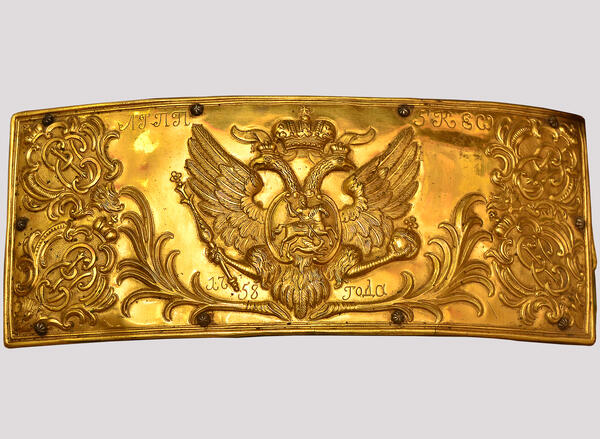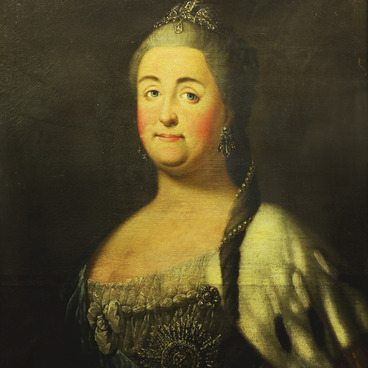The Preobrazhensky Regiment is one of the oldest and most famous guards regiments created by Peter the Great. In 1691, a guards regiment was formed from the ‘toy forces’ of the Preobrazhenskoye village. It was in the Preobrazhensky regiment that many outstanding Russian people began their service: the poet Derzhavin, the writer and historian Karamzin, the composer Mussorgsky. The Preobrazhensky Life-Guard Regiment took an active part in all the palace coups of the 18th century, therefore, realizing the exceptional position of the regiment, all Russian emperors took patronage over it. In addition to participating in palace intrigues, the regiment’s subdivisions also took part in hostilities.
In the Smolensk Museum collection there is aa ammunition case of the chief officer of the Preobrazhensky Regiment. This is a small container bag for carrying cartridges. On the left side of the case’s lid there is an engraving ‘PLGR’, which can be deciphered as ‘Preobrazhensky Life-Guard Regiment’.
On the right side of the cover there is an engraving ‘5 KE ധ’ (ധ is the Greek letter ‘omega’). Researcher Robert-Palassios Fernandos suggested that this means ‘5 corporality Evgraf Ozerov.’ In the lower part of the lid there is an engraving ‘1758’, and in the ‘Register of names most merciful of HIS IMPERIAL MAJESTY in the numbers below, the Life Guards in the regiments, and in the land Shlyakhetsky Cadet Corps were granted ranks, namely in the Preobrazhensky Life Guards’ dated December 31, 1761 on page 161 under the serial number 1463 Fernandos found Evgraf Ozerov. He was admitted to the Guards regiment on March 19, 1739 from the regimental sergeants.
In 1761, Evgraf Ozerov was dismissed due to illness by the Prime Major. Apparently, over the long 23 years of service, Ozerov had a chance to participate in a number of important events in Russian history. For example, it was the palace coup of 1741, because of which Elizabeth Petrovna ascended the throne, as well as in the Russian-Swedish war of 1741-1743 and the Seven Years War. Probably, the descendants of Evgraf Ozerov donated his ammunition bag to the historical and archaeological museum.
In the Smolensk Museum collection there is aa ammunition case of the chief officer of the Preobrazhensky Regiment. This is a small container bag for carrying cartridges. On the left side of the case’s lid there is an engraving ‘PLGR’, which can be deciphered as ‘Preobrazhensky Life-Guard Regiment’.
On the right side of the cover there is an engraving ‘5 KE ധ’ (ധ is the Greek letter ‘omega’). Researcher Robert-Palassios Fernandos suggested that this means ‘5 corporality Evgraf Ozerov.’ In the lower part of the lid there is an engraving ‘1758’, and in the ‘Register of names most merciful of HIS IMPERIAL MAJESTY in the numbers below, the Life Guards in the regiments, and in the land Shlyakhetsky Cadet Corps were granted ranks, namely in the Preobrazhensky Life Guards’ dated December 31, 1761 on page 161 under the serial number 1463 Fernandos found Evgraf Ozerov. He was admitted to the Guards regiment on March 19, 1739 from the regimental sergeants.
In 1761, Evgraf Ozerov was dismissed due to illness by the Prime Major. Apparently, over the long 23 years of service, Ozerov had a chance to participate in a number of important events in Russian history. For example, it was the palace coup of 1741, because of which Elizabeth Petrovna ascended the throne, as well as in the Russian-Swedish war of 1741-1743 and the Seven Years War. Probably, the descendants of Evgraf Ozerov donated his ammunition bag to the historical and archaeological museum.



